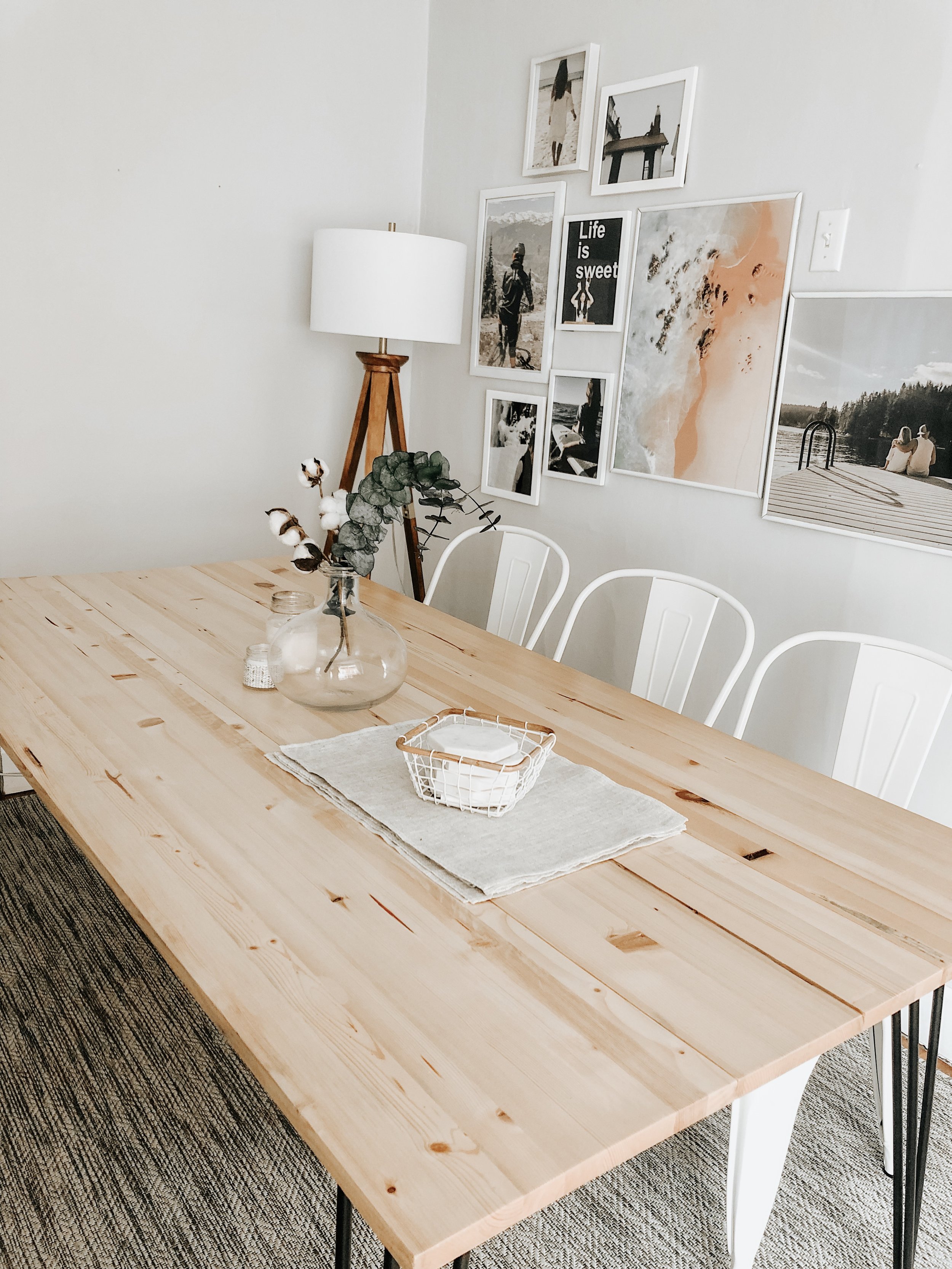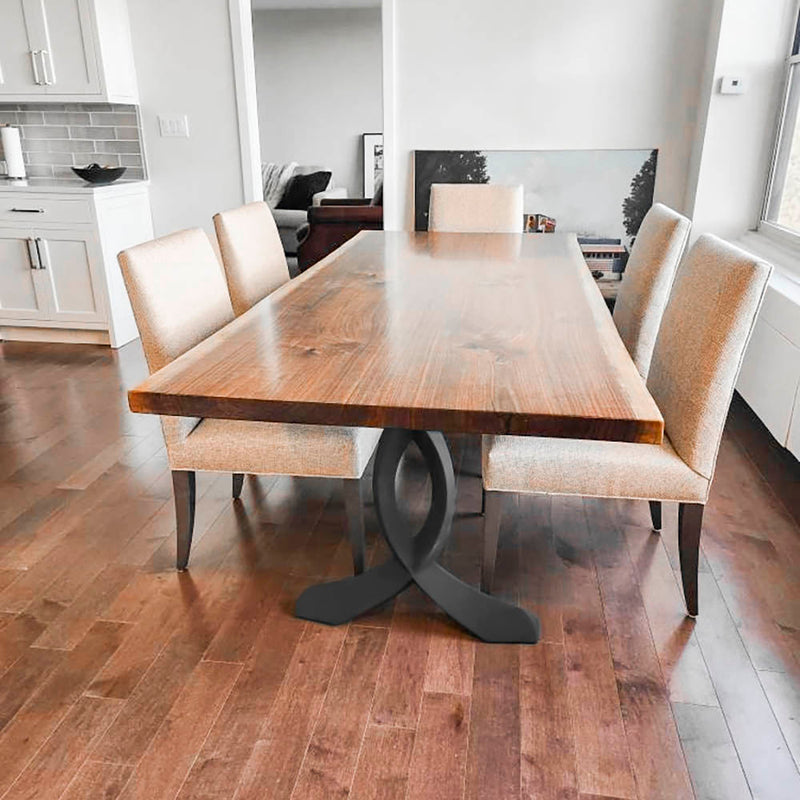Why Dining Room Table Legs Are Crucial for Your Table’s Stability
From Standard to Modern: Locate the Perfect Dining-room Table Legs for Your Design
The option of eating space table legs plays an essential function in specifying the total personality of your area, connecting the void in between typical workmanship and contemporary aesthetics. While classic styles such as cabriole and transformed legs evoke a feeling of timeless class, modern styles like barrette and geometric alternatives offer an opportunity for striking visual rate of interest. Examining the appropriate balance in between these styles requires a nuanced understanding of your existing decor and individual taste. As you consider these elements, the concern stays: how can you effortlessly incorporate these diverse leg styles to produce a harmonious eating experience?
Recognizing Table Leg Styles
The variety of eating room table leg styles can substantially affect both the looks and performance of the room. Each leg design contributes distinct practical functions and aesthetic aspects, providing to varied design choices and use requirements. Comprehending these designs is essential for selecting the best table that aligns with your overall interior layout vision.
For instance, conical legs supply a tidy, timeless look that can improve an area's elegance, while pedestal bases supply stability and maximize legroom, making them excellent for smaller rooms. Barrette legs, a hallmark of mid-century modern-day style, introduce a commercial flair, permitting a ventilated, open feel. Similarly, trestle legs evoke rustic beauty, giving robust support and a feeling of eternity.
Wooden legs can bring warmth and texture, whereas steel options frequently share a sleek, modern vibe. Ultimately, recognizing table leg styles is essential for producing a natural eating area that mirrors individual design while ensuring usefulness and comfort.
Typical Table Leg Options
When choosing dining-room table legs, conventional options usually embody classic beauty and workmanship. These styles reflect an abundant heritage and a dedication to top quality, making them optimal for those that value traditional visual appeals.
Among one of the most legendary standard leg styles is the cabriole leg, identified by its graceful rounded form. This design frequently features decorative carvings and is most typically located in Queen Anne and Chippendale furniture. One more prominent alternative is the transformed leg, which boasts a collection of smooth, rounded forms that supply a traditional look while preserving stability.
In addition, the straight leg, while easy, uses a basic and durable framework that can mix seamlessly with a variety of tabletop designs. For those drawn to ornate detailing, claw-and-ball feet legs evoke a feeling of grandeur and can work as a spectacular centerpiece in any dining area.
Finally, stand bases, although not purely legs, give an alternative standard option that enables enough legroom and can be magnificently carved. Each of these standard leg designs contributes to the overall ambiance of an eating area, weding feature with aesthetic allure.

Modern Table Leg Styles
Modern table leg styles provide a diverse variety of designs that highlight innovative materials and clean lines. These styles typically prioritize functionality while offering as striking focal points within an eating space. Minimal appearances prevail, with legs crafted from materials such as metal, glass, and engineered wood, which add to a modern and ventilated feeling.
One preferred design is the hairpin leg, identified by its slim, conical structure that supplies security without overwhelming the tabletop (dining room table legs). This style is frequently located in mid-century modern-day furnishings and can easily enhance numerous eating table shapes. An additional pattern is the usage of geometric shapes, where legs might take on angular or unbalanced kinds, including visual interest and a touch of link virtuosity

Blending Styles for One-of-a-kind Spaces
Usually, house owners seek to create distinct eating rooms that reflect their individual design by blending various style elements. This strategy enables the unification of varied visual appeals, leading to an unified yet unique atmosphere. For circumstances, matching a rustic wood table with sleek, modern-day metal legs can produce a captivating contrast that boosts the area's general allure.
Furthermore, incorporating vintage table legs with modern tabletops can evoke a feeling of background while preserving a modern sensibility. Such combinations not just showcase specific taste yet also motivate imagination, allowing house owners to curate a room that really feels both personal and welcoming.
Color plays an important role in this mixing article process; selecting table legs that complement or comparison with the existing color pattern can improve visual rate of interest. Whitewashed legs can soften the daring of a dark table surface area, developing a balanced visual.
Tips for Selecting the Right Legs
Selecting the right table legs is crucial for achieving both performance and aesthetic charm in your dining room. Begin by thinking about the general design of your space. Traditional setups benefit from legs that feature complex carvings or turned designs, while contemporary rooms might call for streamlined, minimal styles.
Next, assess the height and stability of the legs. dining room table legs. Common eating tables range in between 28 to 30 inches in elevation, so guarantee the legs enhance this dimension for comfort. In addition, durable materials, such as wood or steel, can enhance security and long life
Review the leg shape too-- choices include straight, tapered, or stand styles. Straight legs offer a traditional look, while conical view website legs can include a touch of sophistication. Pedestal bases offer adequate legroom and are ideal for smaller spaces.
Final Thought
In recap, selecting the perfect eating area table legs calls for cautious consideration of both traditional and modern-day styles. By harmonizing leg design, height, and product with the general décor, a cohesive and welcoming environment can be achieved.
The selection of dining area table leg styles can substantially influence both the aesthetic appeals and functionality of the room. Eventually, recognizing table leg designs is necessary for creating a natural dining location that reflects personal design while ensuring functionality and convenience.One of the most legendary typical leg designs is the cabriole leg, characterized by its stylish curved shape. Straight legs supply a classic look, while tapered legs can add a touch of elegance.In summary, picking the excellent eating area table legs needs mindful consideration of both standard and modern-day designs.